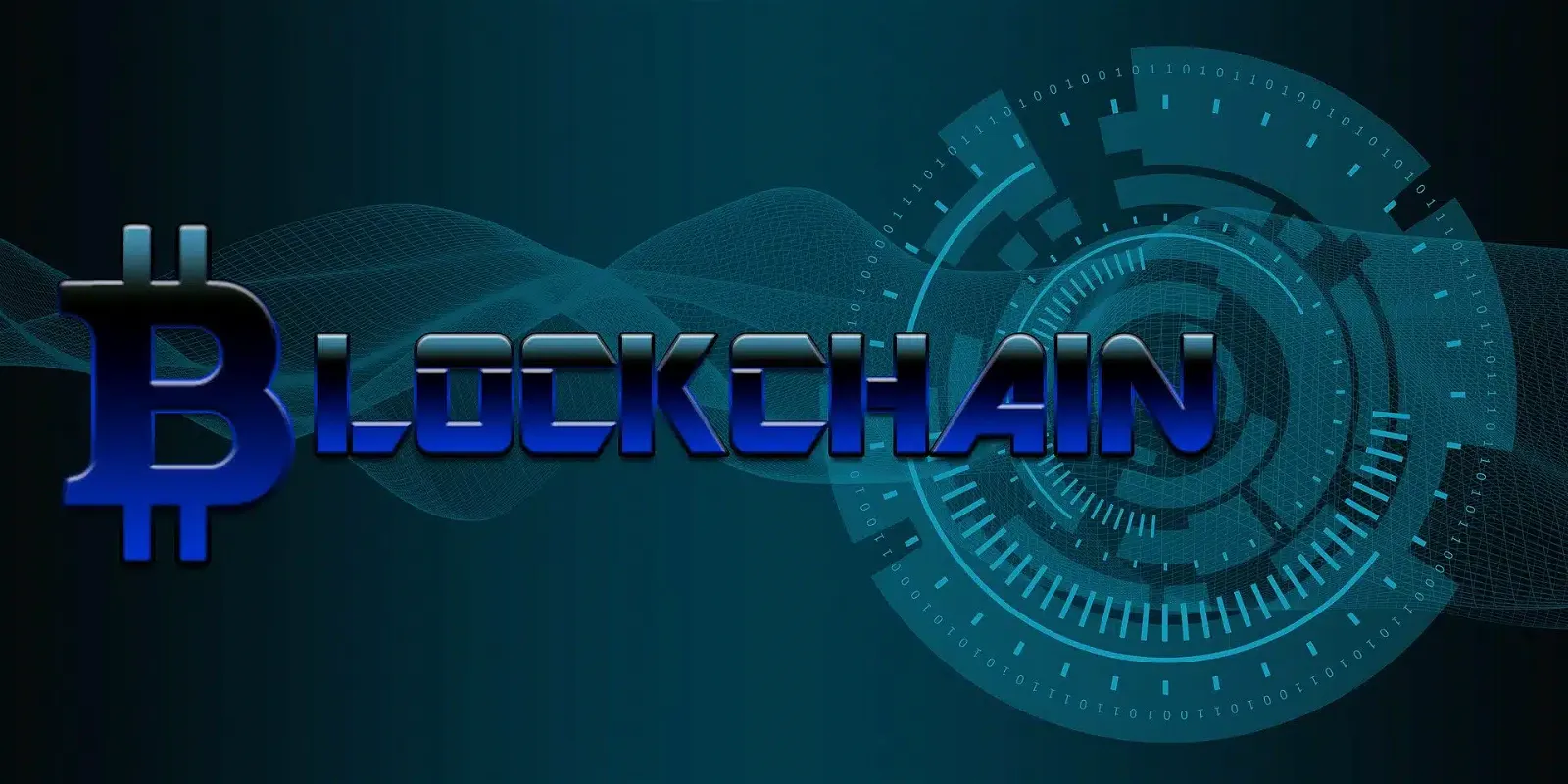Learn Blockchain by Building One: A Comprehensive Guide
Learn blockchain technology by building your own blockchain with our in-depth guide. From the basics to advanced concepts, you’ll gain a thorough understanding of how this revolutionary technology works.

When it comes to financial dealings, data storage, and security, blockchain technology has made profound changes. It might cause a stir in traditionally stable markets like banking, healthcare, and property sales. A good way to become acquainted with this cutting-edge field is to construct your own blockchain. This all-inclusive manual will help you learn blockchain by building one.
Importance of learning blockchain technology
The importance of blockchain technology in the modern internet is rising rapidly. It’s a decentralized database that eliminates the necessity for third-party verification in business deals. In addition to enhancing security, boosting productivity, and bringing about more transparency, being familiar with blockchain technology may provide some other advantages as well.
Improved safety is a major benefit of blockchain technology. Blockchain technology reduces the possibility of fraud and illegal access to data by using sophisticated encryption methods and decentralized networks. Additionally, this is especially useful in sectors like banking and finance, where protecting client information is paramount.
Transactions can be processed more quickly, cheaply, and efficiently due to blockchain technology’s ability to increase efficiency and decrease the need for middlemen. As an added bonus, it may increase trustworthiness in business dealings by facilitating more transaction transparency.
Additionally, in sectors like healthcare and commerce, where patients and suppliers rely on the system heavily, this might boost their faith in it.
Overview of the guide
If you or your company wants to maintain an edge in the modern digital marketplace, learning about blockchain technology may be essential.
Blockchain technology has the potential to revolutionize a wide range of businesses and open up exciting new avenues for development and innovation due to its many advantages. These include increased safety, streamlined operations, and better transparency.
In this guide, there will be a deep and rich understanding of every aspect of blockchain. From its conception to its utilization, you will learn everything about this revolutionary technology.
Understanding blockchain technology
The revolutionary nature of blockchain technology has the ability to radically alter the ways in which we conduct business and communicate with one another. It’s a decentralized ledger that eliminates the requirement for trusted third parties in financial transactions.
Since fresh blocks of data are validated and added to the chain by a network of nodes, it is practically difficult to modify or manipulate the data after it has been added. Data on the blockchain is encrypted using modern encryption to prevent unauthorized access. Due to this, the financial and medical sectors are among those using the system.
In today’s highly connected world, knowing how blockchains work is crucial. Given its decentralized, secure, and transparent nature, it has the potential to revolutionize a wide range of sectors. Those who are familiar with its capabilities and uses will be in a prime position to reap the benefits of this shift.

Blockchain and its purpose – Image via Pixabay
What is blockchain?
To conduct transactions in a way that is both safe and transparent, and decentralized, blockchain technology has been heralded as a revolutionary breakthrough. Simply said, blockchain is a distributed digital ledger that keeps an immutable record of all the financial transactions that take place inside a network.
Additionally, hashes are used to identify data in each block of the chain uniquely. They are generated by solving a difficult mathematical equation. A blockchain is very secure and transparent since no one can modify, alter, or delete these blocks.
Blockchain’s distributed ledger architecture eliminates the middleman or centralized authority often required to verify transactions, which may speed things up and cut down on fees. Numerous sectors, such as banking, medicine, logistics, and even politics, might be revolutionized by this.
Distributed ledger technology, or blockchain, has the ability to dramatically increase productivity, safety, and openness in many different industries. Knowing what it can do and how to use it is crucial in today’s ever-changing digital world.
How does blockchain work?
Blockchain is a technology that combines cryptographic keys, a peer-to-peer network with a shared ledger, and a means of computing to store the transactions and records of the network.
A pair of cryptographic keys—a private and public one—is used for conducting safe financial transactions between participants. The most important feature of blockchain is the secure digital identity reference it provides.
After the digital signature has been generated with the help of the private and public keys, it is combined with the P2P system. The digital signature is used by many people acting as authority to agree on things like transactions. The two parties involved in the transaction are able to reach a consensus via mathematical verification, ensuring a safe and effective exchange.
Finally, participants in a blockchain network carry out a variety of digital transactions by means of cryptographic keys exchanged among themselves over the network.
Blockchain is an innovative and possibly transformational technology for a wide range of businesses because the usage of these keys, in conjunction with a shared ledger and mathematical verification, assures the security, transparency, and efficiency of transactions.
Types of blockchains
Public blockchains, private blockchains, permissioned blockchains, and consortium blockchains are the four most common variants.
-Anyone is welcome to join a public blockchain add their own data and take part in the network’s development. In other words, no one entity has influence over the system as a whole since it is decentralized. The two most well-known public blockchains are Ethereum and Bitcoin.
-However, private blockchains are closed networks that only allow authorized users access. Enterprises and government agencies often use such blockchains to keep and disperse confidential information safely. As a result of their adaptability, users tailor private blockchains to any individual business.
-A permissioned blockchain is a type of blockchain that restricts access to the network to a group of authorized participants. In contrast to public blockchains, which are open to anyone, permissioned blockchains are closed networks that require permission from a central authority to join and participate.
-The last kind of blockchain is a combination of public and private systems, called a consortium blockchain. They are divided up among a consortium of companies that have decided to work together. Consortium blockchains facilitate collaboration amongst businesses while ensuring each entity has autonomy over its data.
It’s important to note that there are benefits and applications for all blockchain models. In contrast to the open and decentralized nature of public blockchains, the increased privacy and security of private blockchains make them preferable for certain use cases.
Consortium blockchains provide cross-enterprise coordination and the pooling of resources. Those looking to choose the finest blockchain for their purposes would do well to familiarize themselves with the distinctions between the many options available.
Benefits of blockchain technology
-Increased security through the use of cryptography and decentralization
-Greater transparency and accountability through shared ledgers
-Improved efficiency by streamlining processes and reducing the need for intermediaries
-Reduced risk of fraud and tampering
-Ability to automate tasks through the use of smart contracts
-Potential to transform industries and create new opportunities for innovation and growth
-Secure and decentralized storage of data
-Increased trust among participants in a network
-Immutable records that cannot be altered or deleted
-Reduced transaction fees by eliminating intermediaries
-Faster and more reliable transactions
Building a blockchain from scratch
Building a blockchain from scratch is a complex task, but it is also an exciting opportunity to learn about the technology and its applications. In this guide, we will take you through the steps of building your blockchain.
Explore how to write code with ChatGPT in five easy ways through our blog.

Building a blockchain from scratch – Image via Pixabay
Preparing your development environment
It is crucial to have your development environment set up before you begin creating your blockchain. In this phase, you will prepare the environment in which your blockchain will be developed and tested.
To begin, choose a language to use for your project’s code. C++, Python, and Java are just a few of the many languages that may be used to create a blockchain. There are benefits and drawbacks to learning any given language; choose the one that works best for you.
After settling on a language, the next step is to provide a suitable environment in which to write code. You’ll need to set up a code editor and the language’s compiler or interpreter to begin coding.
Creating the blockchain data structure
Building a blockchain entails a number of steps, the first of which is establishing a suitable development environment and the second of which is establishing the blockchain’s data structure.
Your blockchain relies on a data structure made up of blocks, with each block having a log of transactions. The term “blockchain” comes from the fact that the blocks form a chain when they are connected.
In order to generate the data structure, it is necessary to provide the characteristics of each block, including the time stamp, the hash of the preceding block, the nonce, and the list of transactions. Also, users can decide upon every block’s dimensions and layout.
Implementing the proof-of-work algorithm
To guarantee that new blocks are added to the chain in a safe and decentralized fashion, the proof-of-work algorithm is an integral part of the blockchain.
Using the proof-of-work method requires a mining procedure that can resolve a difficult mathematical problem. The method is computationally and time-consumingly expensive on purpose, which makes it hard for a single node to control the mining.
Miners must identify a nonce value that, when coupled with the block’s contents, generates a hash that satisfies the proof-of-work algorithm’s requirements. They alter the difficulty of the blockchain frequently to provide a steady influx of new blocks, which determines the criterion.
Creating the blockchain nodes
A node is a computer or other device that is part of the blockchain network. It stores an identical copy of the blockchain. There must be a consensus among all network nodes that all new blocks and transactions are legitimate before they are added to the blockchain.
You will need a system of interconnected computers or other devices with internet access to serve as the “nodes” in your blockchain network. Depending on your requirements and available hardware, these nodes may run on cloud servers or local PCs.
Once users successfully install the nodes, they should configure these nodes so that they can share information and keep a consistent copy of the blockchain. However, consensus is the method through which all participating nodes in a network agree on the validity of pending transactions and blocks.
Creating the blockchain network
Having established the nodes that will participate in your blockchain network, you can go on to establish the network itself. Additionally, the nodes can exchange information and cooperate to keep the blockchain secure.
Establishing a P2P network amongst the nodes is a necessary first step in developing a blockchain network. Networking protocols like TCP/IP and HTTP are often used to facilitate communication between the nodes and the internet.
After the network is set up, make sure the nodes can exchange data and interact with one another. Additionally, consensus is the method used to do this, wherein all of the nodes collaborate to check and confirm all of the most recent blocks and transactions.
Creating the blockchain client
Users may participate in the blockchain network by downloading and running a blockchain client. Taking part in the consensus process involves making and submitting transactions, accessing the blockchain ledger, and more.
It is necessary to design a user interface that facilitates communication between users and the blockchain network to build a blockchain client. Depending on your requirements, you may do this using a wide range of programming languages and frameworks.
Testing and debugging your blockchain
Post developing your blockchain network and client, you must test and debug the code to make sure it’s performing as expected. To find and fix bugs and ensure the blockchain is running smoothly, testing and debugging are crucial stages of the development process.

Testing and debugging your blockchain – Image via Pixabay
Testing the blockchain
Consider a wide range of use cases and edge circumstances while doing blockchain testing. Additionally, you should put the blockchain through its paces in various network environments. This includes those with high latency and low bandwidth. To ensure the blockchain can process a wide range of transactions and data, you should run it through a series of tests.
In addition to testing, extensive debugging can locate and eliminate any problems or flaws in the program. Furthermore, to do so, debugging tools and methods can track the path of data as it travels across the blockchain in search of inconsistencies or slowdowns.
Debugging the blockchain
Building a blockchain makes debugging even more crucial to the development process. Additionally, once you construct your blockchain, you must carefully debug it so that no problems or defects occur.
Find out how blockchain is changing money and businesses in 2023.
Advanced blockchain concepts
Since its inception, blockchain technology has seen fast development. This has led to the emergence of some cutting-edge ideas and methods. Programmers may use them to improve the performance and safety of their blockchain implementations.
However, in order to understand blockchain technology, below are some of the most advanced concepts:
Smart contracts
One of blockchain’s important concepts includes holding smart contracts, which are agreements that can carry out their own terms. Such contracts may simplify the handling of intricate business dealings. However, these include the transfer of assets or the settlement of intricate financial instruments.
Additionally, solidity and other programming languages can create smart contracts. Users can implement it on Ethereum and other blockchain networks.
Consensus algorithms
Multiple nodes in a blockchain network may reach a consensus on the ledger’s state thanks to consensus algorithms. Moreover, proof-of-work, proof-of-stake, and delegated proof-of-stake are only a few of the consensus methods available. Furthermore, these algorithms contribute to the integrity of the blockchain by verifying all transactions amongst the network nodes.
Decentralized applications (dApps)
Cutting-edge approaches and technologies that improve the safety, scalability, and efficacy of blockchain networks are at the heart of advanced blockchain ideas for dApps.
Among them are the ideas of decentralized storage, decentralized identification, oracles, atomic swaps, sidechains, and payment channels. Developers may create dApps that make full use of blockchain’s special qualities by implementing these cutting-edge ideas.
However, more complex and powerful dApps will become possible as blockchain technology advances and new cutting-edge ideas and methods emerge.




